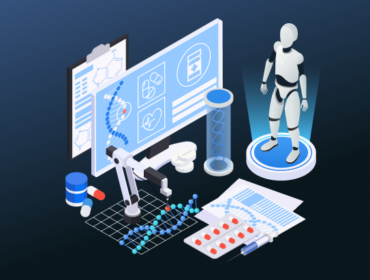A metaverse NFT marketplace is an incredible world that harmoniously combines augmented reality (VR+AR+MR), artificial intelligence, IoT, and blockchain. These marketplaces are full-fledged platforms for NFT exchanges and storage. Thousands of these platforms already exist, including Decentraland, The Sandbox, Axie Infinity, and SuperRare, and are quite popular among their community members.
Innovative technologies can show you what is beyond the universe — a dream space where anything is possible: animated avatars, digital assets, shops to buy and sell unique virtual objects, and gaming platforms.
A true cosmos? No, a parallel universe! Metaverse NFT marketplaces are a new format for digital asset trading. In this article, we’ll tell you about their advantages and their future holds.
Metaverse NFT marketplace market state and predictions
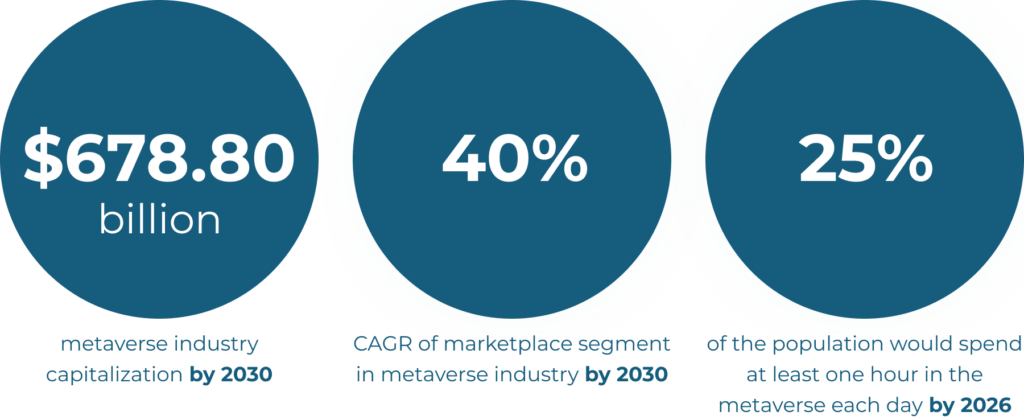
Metaverses constitute a developing market, but they’ve already established themselves as an avenue for investment. Data show that in 2030, the value of the world’s metaverse industry will reach over $678.80 billion, where the marketplace segment is predicted to rise rapidly with a CAGR of 40%.
Metaverse platforms have changed human communication and influenced social interaction, and computer technologies continue to conquer more and more spheres. In their research, the Gartner company concluded that by 2026, 25% of the population would spend at least one hour in the metaverse each day, not only for entertainment or social networking but also for work, education, and shopping.
Metaverse NFT marketplaces are too young to make sweeping predictions. But one thing is clear — there are more and more of them, and the number of organic users keeps increasing.
Types of NFT marketplaces
Several types of metaverse NFT marketplaces exist, each with a different purpose.
Metaverse gaming marketplace
This marketplace type serves true gamers (The Sandbox, Sorare). NFT game marketplaces have everything you might imagine a game should have: characters, collection attributes, in-game assets, and various accessories. But an intrinsic feature of such platforms compared to classical games is a concept called Play-to-Earn or Gami-Fi. Metaverse gaming marketplaces offer real-time games and hyper-realistic navigation. Players can withdraw NFTs to virtual wallets.
Real estate NFT marketplace
It’s a place for trading real estate. Except it’s not real-world real estate, it’s digital. These marketplaces host auctions in real time, where any willing participant can lease, buy or sell their ownership of virtual land or other virtual possessions (Decentraland, PolkaCity, Cryptovoxels).
Metaverse e-commerce marketplace
This kind of futuristic platform is designed to study products on e-commerce trading platforms. The decision to purchase is preceded by something more than working through the specifications of an item. Using VR devices, user avatars can virtually try on clothes, use gadgets, and even apply makeup.
Clients thus buy physical goods, with a customer experience based in a virtual world. It’s fast, user-friendly, and exciting. Warby Parker offers virtual fittings for eyeglasses. H&M and Ralph Lauren invite you into their innovative virtual stores. In cooperation with ZEPETO, Ralph Lauren presented a metaverse with a new collection of clothes for 3D avatars based on selfies. Another interesting example is Charlotte Tilbury Beauty, which created a virtual space that allows shopping with friends.
NFT art marketplace
New, digital dimension for art can be found on well-known marketplaces like NiftyGateway, OpenSea, and more specific NFT art marketplaces like SuperRare and Foundation. Artists sell their NFT-based masterpieces (audio, images, GIFs, and more similar) in NFT art markets, with digital tokens as unique identifiers stored in collectors’ wallets. Before participating in an auction, your avatar can visit virtual galleries to get acquainted with artists’ work.
How do NFT marketplaces work in the metaverse?
Metaverse NFT marketplaces are developed based on blockchain technology using smart contracts. Although the concept has much in common with typical online stores, there are some important differences:
- Tokens, or digital versions of real items, are auctioned off or sold at fixed prices.
- Users need a crypto wallet to buy, sell, or store NFTs.
- Navigation, images, and virtual objects appear in a unique 3D space, offering an interactive, more realistic experience than typical online stores.
- Users make instant payments with crypto wallets.
- Blockchain technology ensures secure transactions with end-to-end encryption for every operation, keeping user data confidential.
- The number of simultaneous users has no limit.
- Users can trade NFTs around the clock.
Registered, users create their avatars and become part of a metaverse. They can generate NFTs with the help of smart contracts that encrypt the NFTs’ main features in every token. Then they can start trading.
Advantages of metaverse NFT marketplaces

Metaverses are gaining momentum and becoming popular. According to data from Mckinsey & Company, 200 million users spend an average of 2.5 hours a day on metaverse services. Another McKinsey & Company report, titled Value Creation in the Metaverse states that so far in 2022, investors poured more than $120 billion into metaverses, and 79% of active visitors made a purchase in the virtual world. So, it’s already a matter of fact that metaverses help e-commerce companies to attract new audiences.
The most distinct advantages, however, metaverses get from the blockchain technology they’re developed on. This means that they incorporate important features like decentralization, security, transparency, and confidentiality. Let’s explore these characteristics in greater detail.
Decentralized platform
There are no go-betweens required to manage a decentralized platform, and all operations are carried out with the help of smart contracts. This way, all the users access a personalized, secure, and controlled platform without third-party management. The same thing with metaverses — no single owner but various users operating simultaneously.
Secure, instant, encrypted P2P transactions
Blockchain tracks the entire chain of custody between users. It also prevents the removal or modification of tokens. Crypto wallet payments use data encryption and do not require personal information or bank card data, making the payment process confidential.
Transparency of every transaction
Transparency of operations is a pillar of blockchains. Metaverse users have access to all information about all transactions among all users, allowing participants to control each other without losing trust.
DAO integration option
Decentralized Autonomous Organization (DAO) makes us forget about a complicated hierarchy and bureaucracy. As long as DAOs are blockchain-based systems, their rules are codified in a computer program and controlled by all participants. For this reason, DAO adds to the development of a community-run metaverse where governance is done with code, and the decisions are made through voting. For example, you may have a look at Decentraland. This metaverse operates on the Ethereum blockchain and is DAO-governed.
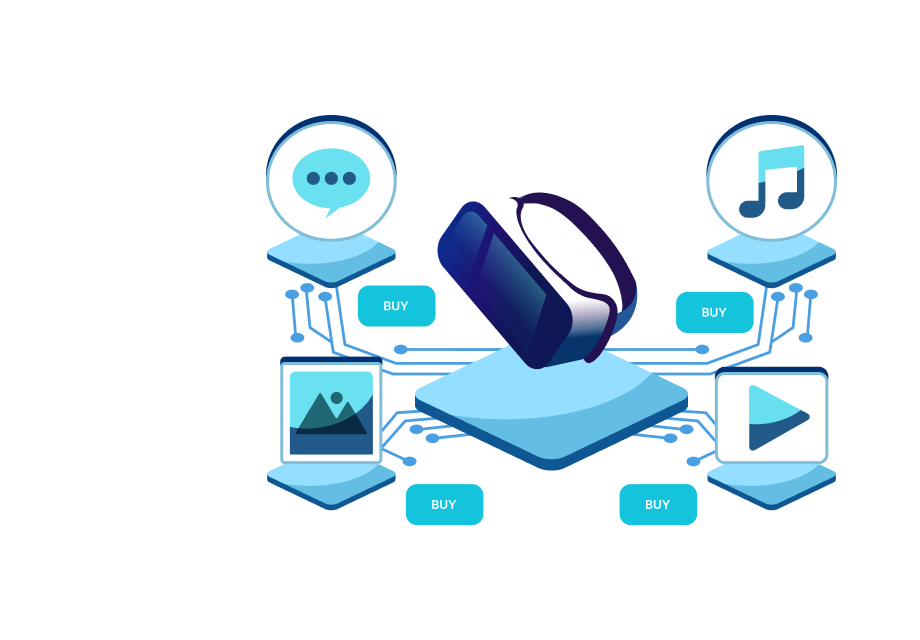
Potential challenges with developing metaverse NFT marketplaces
Despite the craze surrounding NFTs and the opportunities interactive metaverses offer users, problems can arise when developing metaverse NFT marketplaces. Here is a list of some difficulties you may face in the development stage and after launching a metaverse NFT marketplace.
Difficulties with finding product market fit
The development of metaverses takes time, financial investment, modern technologies, various technical stacks, and a team of experienced developers, as well as application service and management after the launch.
Even with all that provided, no guarantees for success. A digital content promotion strategy and constant work with your community are required. Although many believe the metaverse is the future of computing, metaverse NFT marketplace creators should think of customer expectations today, not tomorrow.
Lack of usability and customer support
Immersiveness as a key concept of metaverse shouldn’t be synonymous with chaos. As it was put by Meta’s VP of Metaverse, Vishal Shah, concerning not-so-successful-yet Meta’s Horizon Worlds Metaverse App, “Simply put, for an experience to become delightful and retentive, it must first be usable and well crafted.” So if you want users to massively sell and buy NFTs in metaverse, your developers must build a user-friendly and intuitive interface and include clear and comprehensive training materials for new users.
If they don’t, users who hit snags when creating a personal account and generating NFTs may leave your platform for another.
The next stumbling block might be poor customer support. You must ensure round-the-clock online customer support, which can be challenging for some companies. All mistakes, difficulties, problems, and conflicts users might face must be promptly resolved if you want to attract and retain users.
Copying and unauthorized distribution of tokens
Although NFTs and smart contracts are designed to authenticate ownership, the entire niche still lacks legislative regulation. An ideal solution is the development of a single system for the verification of virtual asset holders. Quality software and technological innovations like advanced know-your-customer (KYC) protocols are salient for all metaverse NFT marketplaces.
Developing a metaverse NFT marketplace with a tech partner
Now about metaverse NFT marketplace development workflow and team composition. It’s worth remembering that creating a metaverse requires both designers and developers. Project roadmap and futuristic design are first to be developed, while ideas are embodied in texts and visual schemes. Every project is individualized, but a rough plan for metaverse NFT marketplace development is the following:
- Project the metaverse architecture and create a digital landscape (3D layouts and prototypes).
- Develop a user-friendly interface with impeccable UI/UX design that delivers customer satisfaction and builds loyalty.
- Select the proper blockchain instruments (e.g., Hyperledger or Ethereum).
- Work on the back end, building logic and server part with smart contracts that make all operations on the platform accurate and secure.
- Add advanced features like decentralization, online showcases, interoperability, wallet integration, and social network interaction options.
- Create an InterPlanetary File System (IPFS) and configure a database to store NFT and user information.
- Add elements to make the platform highly functional, like dApps, a payment gateway, integration of CRM, ERP, and other services to automate internal operations as needed.
- You must test, correct errors, optimize, deploy, launch, and support the product.
A metaverse NFT marketplace is a complicated, multifunctional platform that requires developers with specialized experience. The Unicsoft team help clients from various industries with NFT marketplace development, ensuring every project features:

- Flawless UX/UI
- Bullet-proof smart contracts
- High availability and reliability
- State-of-art infrastructure
- Cybersecurity
- Intuitive crypto-native payment options
- KYC compliance
- Efficient back-office
Contact us for a consultation to learn more about our NFT marketplace development.
Conclusion
Metaverses and NFTs are an ideal combination: technologies that seem futuristic enable the creation of marketplaces and metaverses, where NFTs become the main subject of bidding. Developers’ ideas are realized and transformed when the first metaverse NFT marketplace users come, create their avatars, and begin exploring opportunities of NFTs. By integrating blockchain into everyday life, they significantly augment possibilities for user interaction.





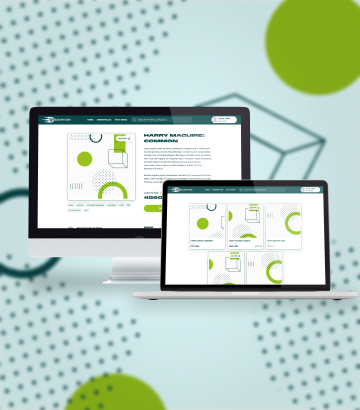
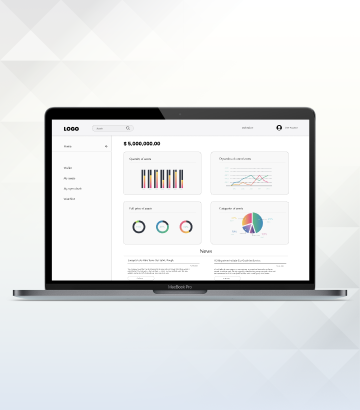
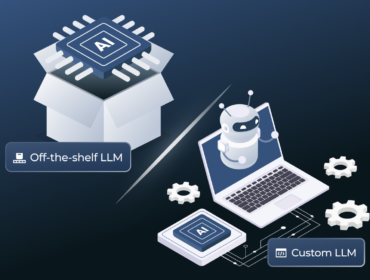
![Metaverse NFT Marketplace Development Guide What’s the EU Artificial Intelligence Act and How to Comply? [Webinar]](https://unicsoft.com/wp-content/uploads/2024/03/Cover_1140_v1.1-370x280.png)
